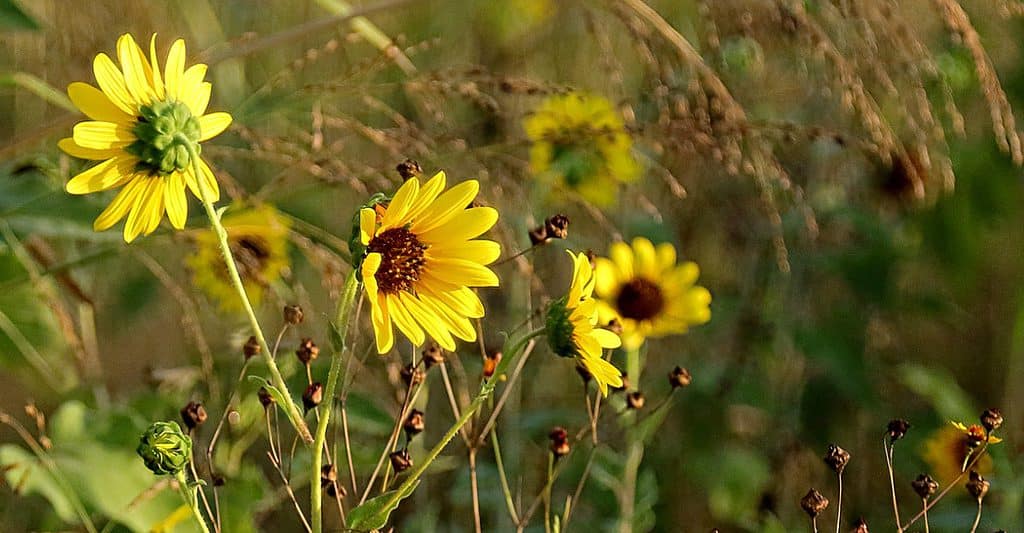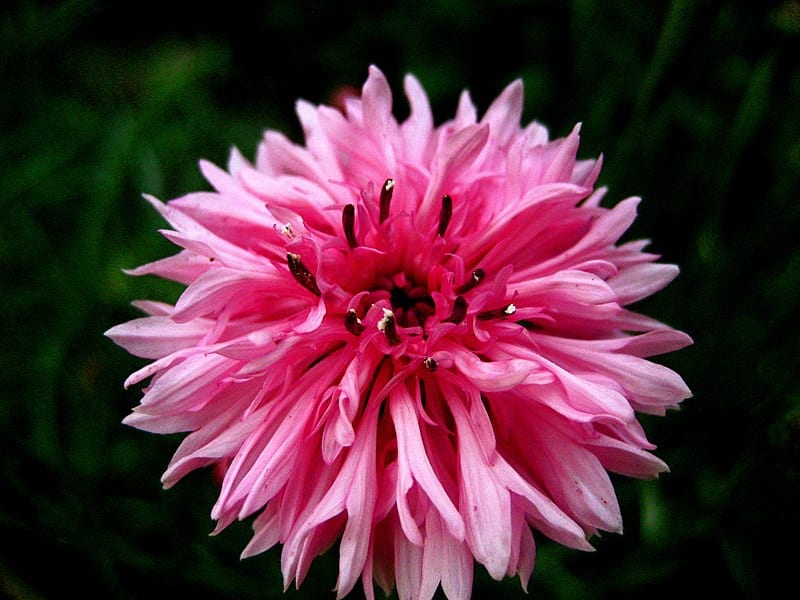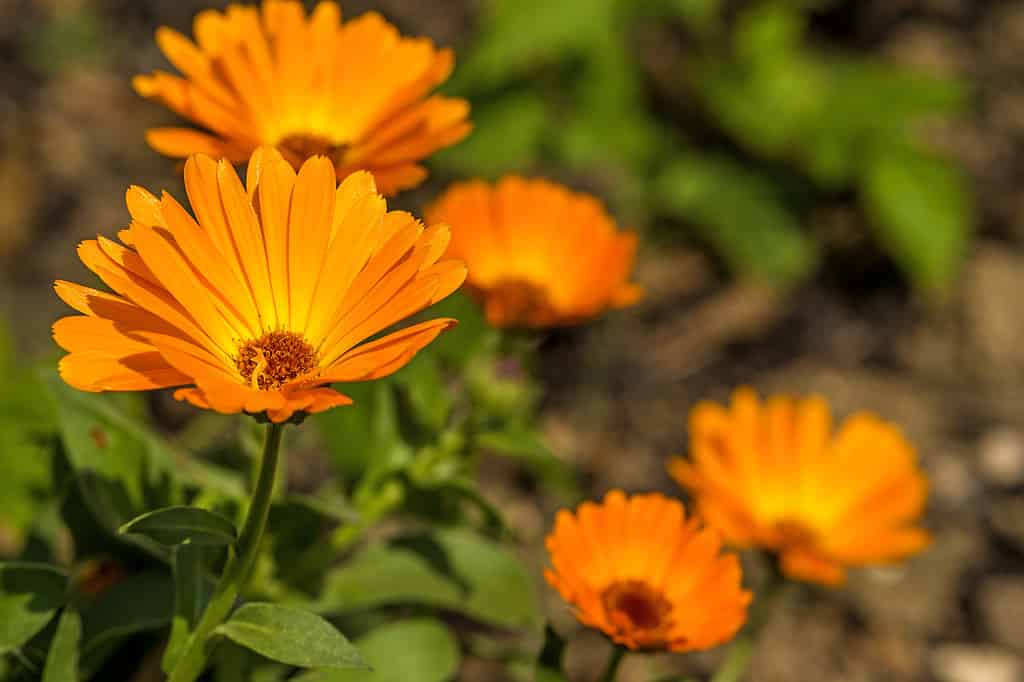8 Beautiful Flowers That Are Safe for Cats
If you’re a proud cat owner and a lover of all things floral, you’ve probably wondered if there are any flowers that won’t send your feline friend into a frenzy of curiosity. The good news is, there are plenty of blooms that are as safe for your whiskered companion as they are beautiful for your home.
Cats are known for their inquisitive nature, and it’s no secret that they like to nibble on anything that piques their interest. But not all flowers are created equal when it comes to feline-friendliness. Some can cause a range of health issues, from mild irritation to serious toxicity.
In this article, we’ll explore a world of blooms that won’t harm your cat, offering you both the pleasure of a blooming garden or a lovely bouquet without any worries.
1. Roses

©Maria Rzeszotarska/iStock via Getty Images
Roses, often celebrated for their beauty and fragrance, are not only a delight to human senses but also a safe choice for households with cats. These exquisite flowers, known for their rich history and symbolism, can coexist harmoniously with feline companions without posing any significant health risks.
One of the primary reasons roses are cat-safe flowers is their non-toxic nature. Unlike some other common household plants and flowers that can be harmful to cats when ingested, roses do not contain any known toxins. You can rest easy knowing that your cat won’t become sick from a rose shrub or a bouquet of fresh roses if it decides to investigate or chew on them.
Fortunately, cats are not known to find rose aromas offensive. Even though cats have a keen sense of smell and can be sensitive to diverse aromas, roses usually don’t bother them. Cats might simply be indifferent to the scent of roses or find it uninteresting, which further supports their cat-friendly status.
However, it’s essential to exercise caution if you have rose bushes with thorns in your garden, as cats may inadvertently injure themselves while exploring or playing around them. To mitigate this risk, you can trim the thorns or create barriers to keep your cats away from the thorny areas.
2. Sunflowers

©iStock.com/Faina Gurevich
Sunflowers, with their vibrant yellow petals and towering presence, not only brighten gardens and bouquets but also bring an added layer of safety for cat owners. These iconic flowers are inherently cat-safe, making them a splendid choice for homes where feline friends roam freely.
One of the key reasons sunflowers are considered cat-safe is their non-toxic nature. These plants do not contain harmful substances that could endanger your furry companions if they happen to chew on the leaves or petals. This quality provides peace of mind to pet owners, knowing that sunflowers won’t pose a poisoning risk.
Moreover, sunflowers’ pleasant appearance and lack of strong fragrance make them less enticing for cats to nibble on compared to some other flowers. Cats are naturally curious, but the absence of a tempting aroma generally discourages them from exploring sunflowers as a potential snack. This reduces the chances of your beloved pets getting into any trouble when sunflowers grace your garden or indoor floral arrangements.
While sunflowers are considered cat-safe, it’s always wise to monitor your cats around any plant. Some cats may still show interest in chewing or playing with sunflowers out of curiosity. To ensure their safety, keep an eye on your pets when they are near these cheerful blooms.
3. Snapdragons

©Nualanong/Shutterstock.com
Snapdragons, with their vibrant colors and unique shape, offer both beauty and safety for cat owners looking to enhance their gardens or indoor floral arrangements. These charming flowers, known for their cat-safe qualities, make them an excellent choice for homes where feline companions roam.
Snapdragons come in a variety of popular species and cultivars. The Common Snapdragon is a widely recognized variety known for its tall, spiky blooms and a spectrum of colors, from classic red and pink to bold orange and purple. The Rocket series of snapdragons is another favorite, offering a range of hues and a compact, bushy growth habit. The Sonnet series, known for its dwarf size, is perfect for smaller spaces and containers. These diverse options make snapdragons a versatile choice for different garden styles and preferences.
Snapdragons’ capacity to thrive in a wide range of climates is a major benefit. These tough plants can survive in temperatures from zone 4 to zone 10, which covers much of the United States. You can successfully grow snapdragons effectively regardless of whether you live in a cooler or more temperate environment.
Snapdragons are considered cat-safe flowers, as they are non-toxic to cats. Unlike some plants that can be harmful if ingested, snapdragons pose no significant threat to your feline friends. Their unique, tubular flowers may pique a cat’s curiosity, but their lack of toxicity ensures that even if your cats explore or nibble on them, it won’t lead to poisoning or health issues.
4. Bee Balm

© Johnathan J. Stegeman/CC BY-SA 3.0/ – License
Bee balm, a vibrant and aromatic plant, is not only a favorite of garden enthusiasts but also a cat-safe option for those with feline companions. These lovely flowers have a distinctive appearance and alluring fragrance. They can thrive in various environments while ensuring the safety of your pets.
Several popular varieties of bee balm exist, offering a spectrum of colors and characteristics. The Wild Bergamot is a native variety known for its lavender to pinkish-purple blossoms. It is also known for its ability to attract pollinators like bees and butterflies. The Jacob Cline variety boasts striking red flowers and is favored for its robust growth. Lemon bee balm, as the name suggests, infuses a citrusy scent into your garden with its pale yellow blooms. These diverse choices make bee balm suitable for a range of garden styles and preferences.
Hardiness zones play a crucial role in determining where bee balm can flourish. Bee balm is typically best suited for hardiness zones 4 to 9, making it adaptable to a broad geographical range. Whether you reside in a colder, northern region or a milder, southern climate, you can likely cultivate bee balm successfully. To be sure your chosen bee balm type will thrive in your climate, it’s a good idea to research its unique needs and compare them to the climate conditions in your area.
There are no toxic chemicals or other components in these flowers that might harm your kitties. If your cats are naturally inquisitive, you need not worry that they may become sick from interacting with the bee balm in your garden.
5. Calendula

©iStock.com/HansJoachim
Calendula, also known as pot marigold, is a delightful and cat-safe flower that has been cherished for its beauty and medicinal properties for centuries. These vibrant blooms are not only pleasing to the eye but also a safe addition to gardens and homes where cats are part of the family.
Calendula comes in various popular varieties, each with its unique charm. The Common Marigold features bright orange or yellow petals and is renowned for its healing properties in traditional herbal medicine. The Pacific Beauty Mix offers a range of colors, from cream to deep orange, creating a stunning visual display. The Princess series is a compact variety, perfect for containers and smaller garden spaces. These diverse options make calendula a versatile choice for adding color and elegance to your outdoor or indoor floral arrangements.
Hardiness zones play a significant role in determining where calendula thrives best. Calendula is generally well-suited for hardiness zones 2 to 11, making it adaptable to a wide range of climates. Whether you reside in a chilly northern region or a warmer southern area, you can successfully cultivate calendula. However, it’s essential to consider local conditions and microclimates, as well as specific variety requirements, to ensure optimal growth.
Calendula’s safety around cats is a major plus. These blossoms are safe for your feline friends to investigate and munch on since they are not harmful. Calendula gives you peace of mind that your cats may safely cohabit with these gorgeous blossoms, unlike certain plants that can be dangerous if consumed.
6. Bromeliads

©iStock.com/ASIMAKIN
Bromeliads have an exotic and striking appearance. They are not only an eye-catching addition to any space but also a cat-safe choice for households with feline companions. These unique plants offer an intriguing blend of beauty and safety, making them an excellent choice for cat owners.
Bromeliads encompass a wide range of popular varieties, each with its distinctive characteristics. The Guzmania bromeliad is known for its vibrant, long-lasting blooms in brilliant red, yellow, or orange hues. It is a common choice among enthusiasts. The Neoregalia variety features stunning foliage patterns in shades of green, red, and purple, making it equally appealing. The Tillandsia, or air plant, is another favorite, known for its ability to thrive without soil and its artistic potential for creative displays. With such diversity in bromeliad varieties, there’s a suitable option for every garden or interior décor style.
Hardiness zones 10 and 11, which include much of the tropics and subtropics, are ideal for growing bromeliads. These plants are best grown in settings that mimic their native Central and South American climates of warm and humid temperatures. They may be cultivated inside in other zones, but only if a microclimate of the right temperature and humidity is created for them.
If your cat is interested and decides to inspect or nibble on one of these plants, there is no need to worry because they are non-toxic to cats. Because of this, cat owners may safely add exotic and eye-catching bromeliads to their homes. They can do so without worrying about the well-being of their feline companions.
7. Petunias

©https://tenrandomfacts.com/petunia//Shutterstock.com
Petunias, renowned for their vibrant colors and delightful fragrances, are a popular choice for gardens and hanging baskets. What sets them apart for cat owners is their cat-safe nature. This makes them an ideal floral addition to homes where feline companions reside.
Several popular petunia varieties offer a kaleidoscope of colors and unique characteristics. The Grandiflora petunia, with its large, showy flowers, comes in an array of colors, from classic purples and pinks to striking yellows and reds. The Multiflora petunia features smaller but prolific blooms, creating a dense and colorful display. The Wave petunia, known for its trailing habit, is perfect for hanging baskets and cascading arrangements. With these diverse options, petunias cater to various garden styles and preferences.
Hardiness zones play a vital role in determining where petunias thrive best. These versatile plants can adapt to a wide range of hardiness zones. These zones typically span from 9 to 11 for perennial varieties and zones 2 to 11 for annuals. This adaptability means that whether you live in a temperate or subtropical climate, you can cultivate petunias successfully. However, it’s crucial to consider the specific variety’s requirements and your local climate conditions for optimal growth.
What makes petunias especially cat-friendly is their non-toxic nature. These flowers do not contain any known harmful substances that could endanger your cats if they happen to chew on the leaves or petals. While cats are naturally curious and may explore plants, petunias pose no significant threat to their well-being, offering peace of mind to pet owners.
8. Alyssum

©iStock.com/Sundry Photography
Alyssum, with its delicate clusters of tiny, sweet-scented flowers, is a charming and cat-safe flower choice for both gardeners and cat lovers. These dainty blooms offer not only visual appeal but also the assurance of safety for your feline companions.
Alyssum comes in various popular varieties, each offering its unique beauty and characteristics. Sweet Alyssum is a classic choice, known for its low-growing, trailing habit and its small white or purple blossoms. The Snow Princess variety, a more compact version of Sweet Alyssum, creates a carpet of white flowers. The Carpet of Snow variety boasts a profusion of fragrant blooms. With these versatile options, alyssum can enhance gardens, containers, and hanging baskets, adding a touch of elegance and fragrance.
When it comes to hardiness zones, alyssum is adaptable to a wide range. Typically, alyssum is suitable for zones 3 to 10, which encompasses various climates from cool temperate to subtropical regions. Whether you live in a chilly northern area or a warm southern climate, you can successfully cultivate alyssum. However, specific varieties may have slight variations in their hardiness. So, it’s advisable to check the specific requirements of the alyssum variety you choose. Be sure to compare it to your local hardiness zone.
A major benefit of alyssum is that it is safe for cats to consume. If your cat decides to inspect or chew on these blossoms, they won’t do them any damage because they are non-toxic to felines. Because of this, alyssum is a great option for cat owners who want to cultivate a beautiful garden space where their feline friends may feel at ease.
Summary of Beautiful Flowers That Are Safe for Cats
| # | Flowers |
|---|---|
| 1 | Roses |
| 2 | Sunflowers |
| 3 | Snapdragons |
| 4 | Bee Balm |
| 5 | Calendula |
| 6 | Bromeliads |
| 7 | Petunias |
| 8 | Alyssum |









